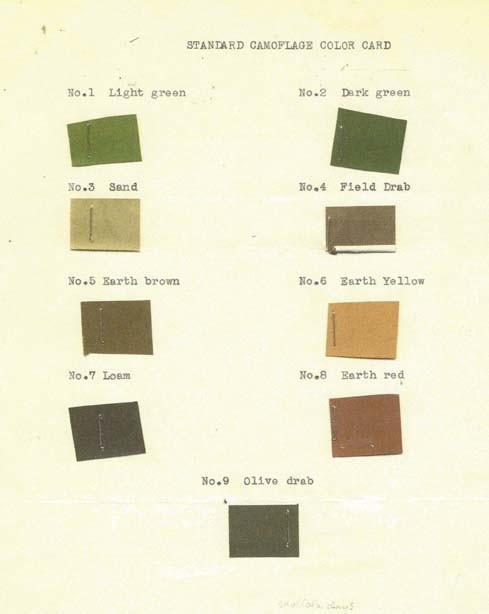
Copyright Margret E. Short 2017 SOLD
Camouflage Pigments Like You’ve Never Seen Before
As promised, the final piece in the Indigenous Naturals Pigment Project, is revealed: Camouflage Modello, Oil on Linen 6×8. The previously-mentioned twist is disclosed and oh my – is it an interesting twist! Never in my wildest dreams did I ever think that researching historical pigments would have a military connection, let alone one that would lead straight into the machinations of WWII and the defense of our country.
Department of the Interior Requests NW Pigments
In February of 1942, the Department of the Interior in Washington DC began correspondence with Oregon geologists. Their objective was to identify natural pigments that could be used for camouflage of the cantonments to be installed along the coast to prevent attack. The geologists received a chart identifying the colors needed for the project. Nebulous general names were used but the charts provided a clear description of exactly what was required.
Our Oregon geologists were catapulted into immediate action to ferret out any and all provisions!

Camouflage Modello was inspired by this color chart. It includes only a few additional pigments: burnt umber for darkening, burnt sienna (used sparingly), and white for the highlights. Interestingly, this piece was the first to sell. Comments on this still life oil painting were primarily related to the peaceful quiet of the palette. Ironic that colors used in war can inspire peacefulness.
Thanks Bronze Coast for a great weekend!

Wow! That is interesting. Thanks so much for sharing. It’s a beautiful piece. Wish I could of seen it in person.
Thanks Becky! Glad you liked the post.
Margret: I hope you’re writing a book!
Yes, as a matter of fact I am writing a book. Thanks to you and your encouragement to begin a blog eleven years ago, I now have miles and miles of stories, images, and documentation of my work to fill several books. I think of you often with appreciation for coaching me when I did not even know what the word blog was. I will be forever grateful.